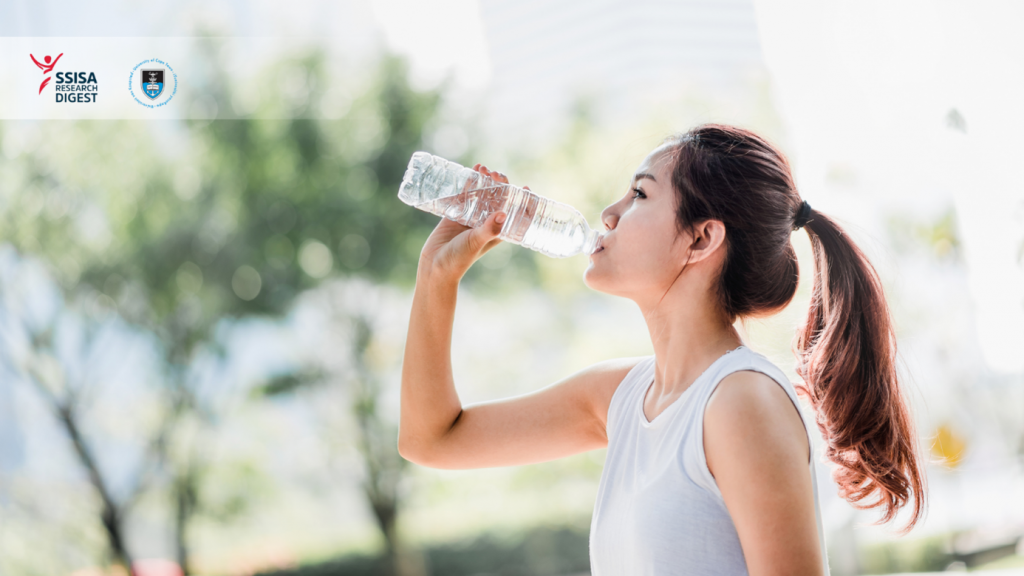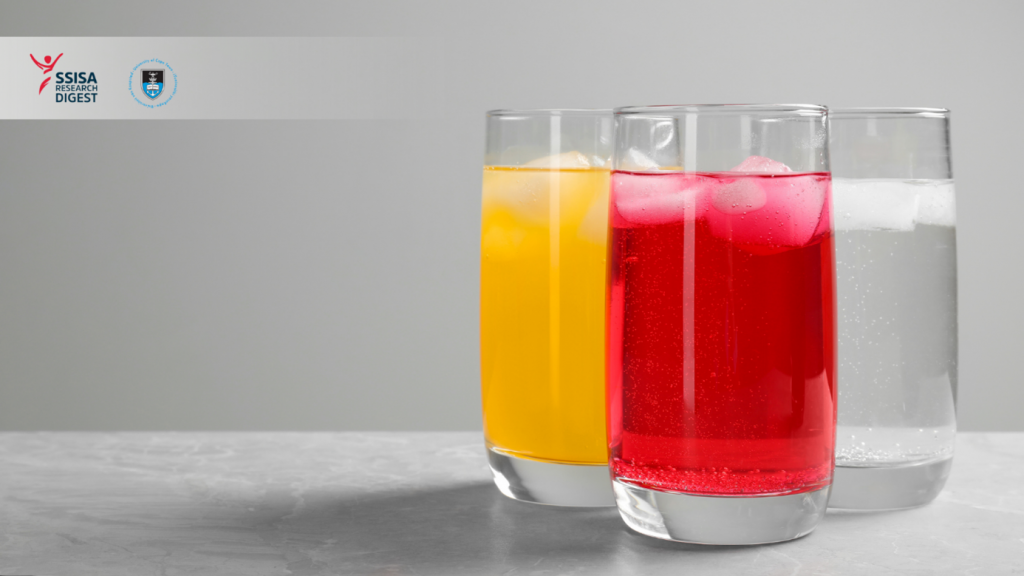RECOVERY – Hydration and Rehydration by Electrolyte Replacement Drinks
Hydration and dehydration are two terms relating to the fluid and electrolyte balance of the body (1). A hydrated body is often deemed to be a healthy body, as the body relies heavily on water to maintain its normal daily functions. These include removing waste, aiding in digestion, maintaining body temperature, and regulating blood pressure (1,2).
When a person does not drink enough water and becomes dehydrated, they no longer have enough water or electrolytes to maintain regular bodily function.
There are many ways to become dehydrated, apart from not drinking enough water. The body loses water and electrolytes through many different pathways such as during high temperatures, exercise, or when going to the bathroom (1).

Dehydration comprises three different levels of severity: mild, moderate, and severe (1):
• Mild dehydration is characterized by extreme thirst.
• Moderate dehydration symptoms include increased breathing rate.
• Severe dehydration is characterized by irritation, low blood pressure, deep breathing, and eventually loss of consciousness.
So how do we avoid dehydration?
The obvious answer would be to drink more water. The recommended daily intake of water depends on a few different factors, but it can most easily be determined by a person’s body weight. It’s recommended to drink 1 cup (250ml) of water per 10kg of weight. Therefore, an 80kg person should drink 250ml X 8 = 2L.
However, in extreme cases, such as during sporting events or hot, humid climates, where water replenishment is not enough. This is due to the rapid loss of electrolytes. We mentioned these earlier, but what are they exactly? Electrolytes are nutrients in the body that aid in functions, such as muscle contraction, heart functionality, blood pressure, nerve conduction, and body fluid balance. Electrolytes include sodium, potassium, and magnesium (2).

Avoiding dehydration can be difficult during certain situations when water is lost faster than it can be replenished (1). Such as when sick or suffering from illness such as fever, vomiting, and diarrhoea when fluid loss is high (3), or during hot weather and exercise when sweat and breathing rate are increased. Replenishing both water and electrolytes can help the body get back to normal. This is where rehydration drinks become useful (3). Rehydration drinks commonly contain electrolytes in powder form which is added to water to achieve fast rehydration. They can be used during any of the above situations when dehydration is unavoidable, such as when sick, in hot temperatures, or when exercising.
There are several rehydration drinks on the market in SA, so which is best to choose from? As per all food and supplement recommendations, this depends on your goals. Those wanting to rehydrate and replenish glucose stores can opt for a rehydration option that includes both electrolytes and carbohydrates. Someone who is wishing only to rehydrate can opt for a solution that is carbohydrate-free. Additionally, there are options that are sweetened or unsweetened, as well as a few that are calorie-free for those not wanting the extra energy. Another factor to consider is gut discomfort, as certain supplements can cause a minor to moderate level of gastrointestinal irritation (4). Gut discomfort is often caused by certain sweeteners, so finding a sweetened version will sometimes be due to personal preference if your gut prefers xylitol or stevia (4). The quantity and type of electrolytes present should also be a deciding factor, while some rehydration options may only contain sodium, magnesium, and potassium, whilst others may include additional nutrients such as calcium and chloride. Diet may also play a role in deciding to rehydrate or not, particularly diets low in carbohydrates, such as paleo or keto. These diets often have diuretic effects, causing people to lose more fluid (5).
The importance of rehydration can’t be overstated in maintaining a healthy and functional body, and while the primary solution to combat dehydration is increasing water intake, rehydration drinks can offer a practical and efficient solution to restore the body’s fluid and electrolyte balance swiftly. Understanding the role of rehydration and making informed choices about rehydration drinks can aid in maintaining optimal health, especially in challenging situations where fluid loss outpaces replenishment. Whether facing hot weather, engaging in vigorous exercise, or dealing with illnesses, the appropriate rehydration strategy can contribute significantly to restoring the body to its normal state, and choosing the right rehydration drink depends on individual needs and circumstances.
For more evidence-based articles and information related to training, exercise and sports science, check out Research Digest by the Sports Science Institute of South Africa (SSISA)
by Devon Da Costa Research Consultant – SSISA
References:
- Basal B Basal N. Activity Thirst & Drinking Behavior Sweat Gland Secretion of Hypotonic Fluid Kidney Regulation of Water & Electrolytes Neuroendocrine Homeostatic Responses a Effects on Water & Electrolyte Balance Sedentary daily activities (16 h) Basal. Vol. 13, Nutrients. 2021.
- O’donnell MJ, Yusuf S, Mente A, Gao P, Mann JF, Teo K, et al. Urinary Sodium and Potassium Excretion and Risk of Cardiovascular Events [Internet]. Available from: www.jama.com.
- Tello L, Perez-Freytes R. Fluid and Electrolyte Therapy During Vomiting and Diarrhea. Vol. 47, Veterinary Clinics of North America – Small Animal Practice. W.B. Saunders; 2017. p. 505–19.
- Suez J, Korem T, Zilberman-Schapira G, Segal E, Elinav E. Non-caloric artificial sweeteners and the microbiome: Findings and challenges. Gut Microbes. 2015 Apr 1;6(2):149–55.
- Thomovsky E. Fluid and Electrolyte Therapy in Diabetic Ketoacidosis. Vol. 47, Veterinary Clinics of North America – Small Animal Practice. W.B. Saunders; 2017. p. 491–503.






